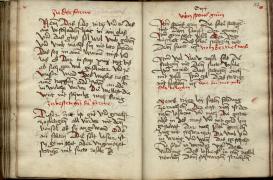Due to their trade value, a huge range of artistic materials were documented and recorded in historical written sources. However, other substances had no market value and therefore cannot be found in these archives. This is especially the case for vegetal species commonly found in nature and favored by artists for their coloring properties (flavonoid and anthocyanin). As they are highly unstable in ordinary daylight, it has always been assumed that these colorants were not used to dye quality materials or in painting. To complicate the issue, these colorants are difficult to identify through archaeometric analysis. For all these reasons, these materials have remained "elusive," and they have not yet been the subject of academic investigation.
This project shed light on these "elusive" substances through the close examination of an original and primordial source: artists’ recipe books. Until now, it was thought these organic colorants were only used in domestic contexts, for the dyeing of everyday clothes. Yet these books both describe these substances and indicate their use in illumination. This research significantly increased our knowledge of historical artistic practices and materials and also helped to identify specific artistic productions and workshops. The study was based on a corpus of more than 300 manuscripts from the North of Europe, brought together in a database of artists’ recipes.


